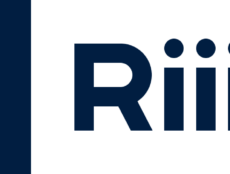
If you have been around for a while, you will notice that a lot has changed in the writing circle over the years. Gone are the days when it was extremely difficult for writers to get their work to as many people as possible. Like any other human endeavor, the medium and art of writing as a whole have been impacted in ways many thought was impossible several years ago.
With the move from physical writing to digital, people can now write more, faster, and even disseminate easier than before. Writing has been a critical skill for many generations; many have been slow to adopt new technology to aid their writing. In schools, most especially, while electronic devices are not encouraged in the classroom, the impact the technology has had in real-life cannot be quantified.
Today, whether you are writing a book, working on your assignments, sending emails, or writing blog posts, you will have to rely on digital technology. So, how do you leverage this technology to help you with how to write quickly, how to write faster and smarter? There are assistive tools that will help you utilize the features that technology has made available to you.
Types of Assistive Technology Tools for Writing
There are several types of tools that aid writing, let’s look at some of these tools
Keyboard and touchscreens
If you struggle with handwriting, then the keyboard and touchscreens will help you. You can input letters and words through typing or touching the screen instead of using a pencil or pen.
Speech-to-text (dictation)
This tool helps you to write using your voice. With speech-to-text tools, all you have to do is speak, and your words will appear on the screen. The rule of thumb here, however, is that you must be able to speak clearly else your words will be misspelled. You will also need to learn excellent verbal commands to aid punctuation while writing. And even if you don’t have that, you can easily edit after the writing.
Word prediction
Word prediction is another tool that can come handy; it relies on word banks to help you suggest correct spellings of words after typing a few letters. Word banks are a group of commonly used words in a topic area.
The only thing is that word prediction works with a keyboard, unlike speech-to-text.
Grammar and spelling check
Most word processors have spelling and grammar check installed; however, assistive tools take the game to another level. You get to check for incorrect words that sound the same or are out of place in context.
Most people who aren’t exactly sure of their writing expertise look to professionals to help. For instance, if I am a student in Australia, and want to write my essay, I will either use the spelling and grammar check to ensure my essay is correct before turning it in. Students often seek help with AU.Edubirdie to ease their college life.
Text-to-speech (TTS)
TTS tool is often regarded as a reading tool, but they offer help in writing too. Text-to-speech tools can read your writings aloud, and you can easily check for mistakes. Some other TTS tools can even read out words as they are being typed.
Handwriting tools
If you have trouble with motor skills, then there are handwriting tools that will help you write my essay for me better. For instance, a slant board can be used to raise the writing surface to ease your handwriting, and a pencil grip helps you to hold a pencil properly.
Any lined or graph paper is another handwriting tool that will help you write in straight lines.
Graphic organizers
We all need to break complex projects into small parts, and again digital technology through assistive tools can be of help. Graphic organizers can help you brainstorm and plan what you intend to write. And they come in various forms; flow charts, diagrams, or even mind maps, and they can be digital or pen and paper.
Dictionaries and thesauri (digital or print)
When you intend to define a word or find the right one in your writing, dictionaries and thesauri will help you. And, of course, there are many types available today. You will find a picture dictionary that uses images to define words.
How to Choose the Best Tools
There are a lot of tools and technology available today, and you can easily get confused and frustrated. The reason may be because many of these claims to serve you the best, and after using them, you discover otherwise.
To be free from this, there area few steps you can take.
Talk to others
The best thing to do is to talk to other people in your circle doing similar work. You will find out that people are willing to help if you ask them what tools they have been using to deal with a particular task.
If you don’t have any physical gathering or group you can ask, you can meet people online in forums, meetups, conferences, and even professional development events. Talk about the tools you are using and why and let them also share their experience with you.
Compare multiple options
Most of us are guilty of this; once we are comfortable with a tool, we tend to use it even if it doesn’t exactly serve the purpose. So, to leverage digital technology in writing fast, you should consider trying out different tools.
If you are adventurous, you can make a spreadsheet and compare two competitors through their values. It is possible that the two tools are not exactly alike.
Ask questions
There is nothing wrong with asking questions. If you are a teacher and have adopted a tool to teach your student, after a while, you can ask fellow teachers or students what they think about the tool and the likes.
Measure specific outcomes
Just as strong student writing requires a well-constructed rubric, finding the right technology tool for your classroom requires specific, measurable outcomes. Doing this will allow you to compare different tools and pricing options objectively.
Writing faster is no magic; it is a combination of working faster and leveraging on digital technology. Embrace the several opportunities available today but also be genuinely interested in trying different options.
Featured Image: Andreea Juganaru, Unsplash.









No Comments